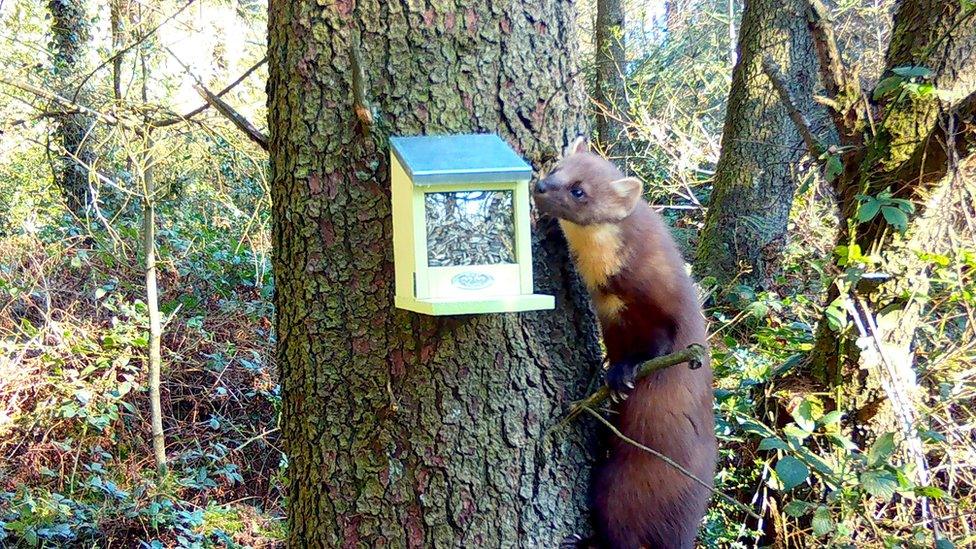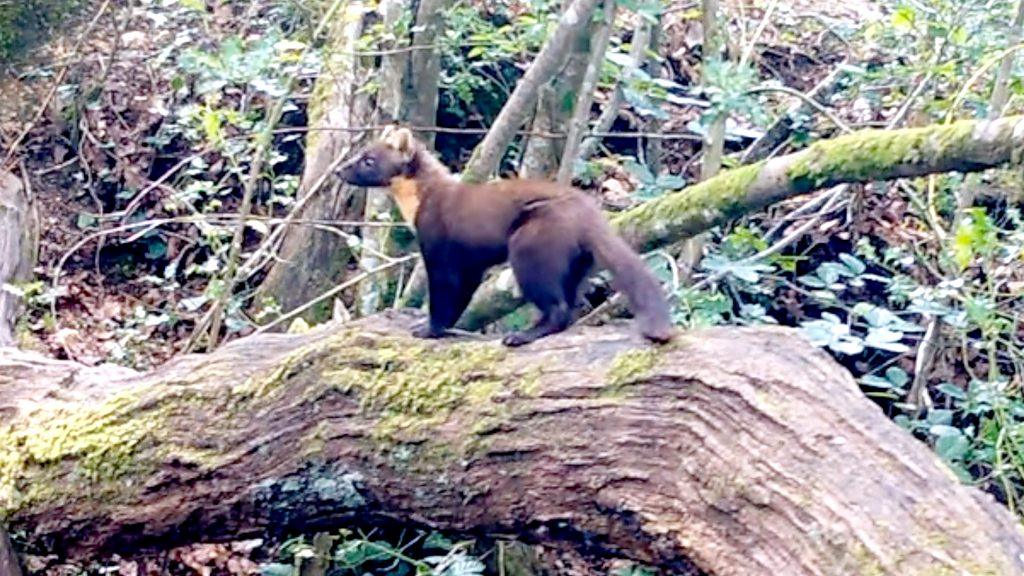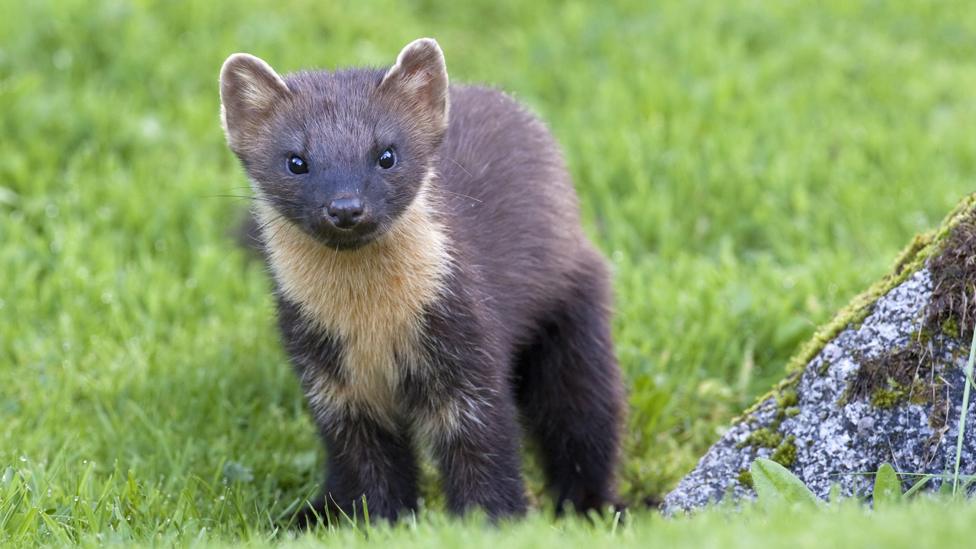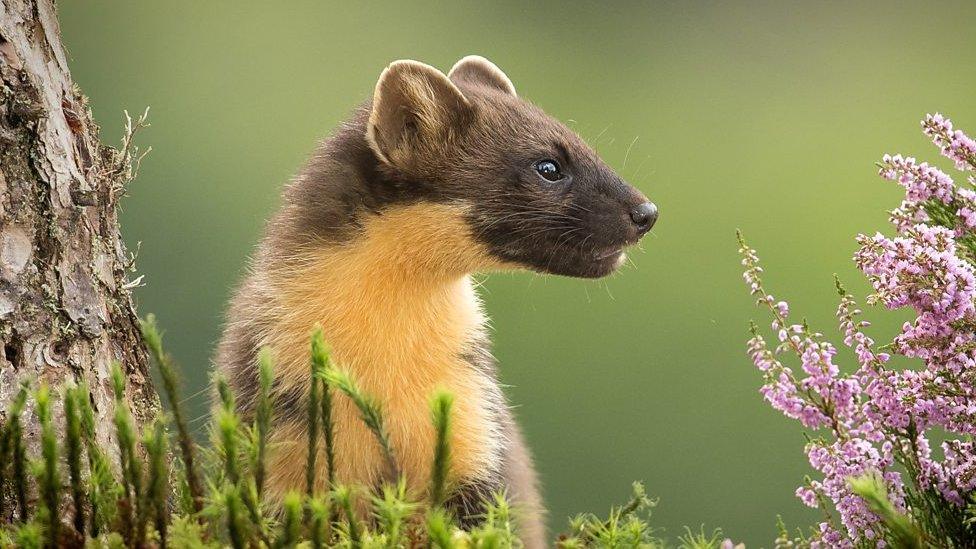Pine marten spotted on Anglesey after 30 years
- Published

The photo was part of a sequence of 15,000 photos taken by a camera on the island
The first confirmed sighting of a pine marten in 30 years on Anglesey has been made by red squirrel researchers.
The three photos were part of a set of 15,000 captured by one of the cameras set on the island to improve knowledge of red squirrel habitats.
Researcher Dr Graeme Shannon said he was "thrilled to suddenly come across three clear images of a curious pine marten looking back at the camera".
Pine martens have been released in other parts of Wales since 2015.
The team of Bangor University researchers set up the network of cameras across different types of woodland.
The project, funded by Natural Resources Wales aims to see how forest management may affect their numbers.
"After working my way through a few hundred great tit photos - seemingly the same individual hopping back and forth - I was thrilled to suddenly come across three clear images of a curious pine marten looking back at the camera," added Dr Shannon.
He said until recently the species was extremely rare in Wales so it was "an unexpected but very exciting discovery."
Pine martens were released near Bangor between 2018-20 as part of the Gwynedd Pine Marten project.
Scientists have very occasional photographic evidence of individuals in Faenol woodland near the Britannia railway bridge.
Researchers said there have also been anecdotal reports of animals close to Holyhead, fuelling suspicion that perhaps an animal may have stowed away on an incoming ferry from Ireland where the species is abundant.
In addition, 51 pine martens were released in mid Wales in 2015-2017 to help boost numbers and some of these animals have been sighted more than 31 miles (50km) from the release site.
Pine martens are medium-sized predators weighing 1.5-2kg (about 3lbs).
They can climb trees well and have a diet that includes bird's eggs, forest fruits, tree berries, small rodents and occasionally red and grey squirrels.
They live in very low numbers and are often very elusive, but recent research has shown that they can play a critical role in controlling the invasive grey squirrel.
Dr Simon Valle, conservation science lecturer, said: "It's encouraging to see that even on an island with such low tree cover, local forests still hold the potential for witnessing the return of a charismatic species such as the pine marten.
"Maybe our forests are, or can be, much wilder than we often think."

EXPLORE ANGLESEY'S RICH WILDLIFE: Iolo explore Wales’ biggest island by land and sea
ICONIC WELSH PEOPLE, PLACES AND THINGS: Kiri unearths the best clips from the BBC Wales archive

- Published15 August 2021

- Published9 June 2017

- Published8 September 2020
